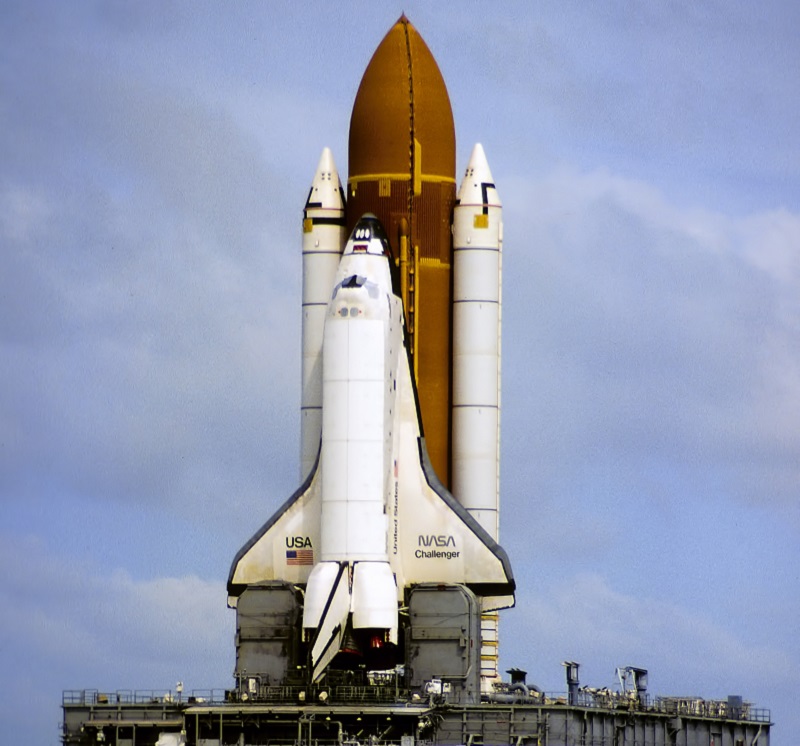1.4 Ethics Example: Shuttle Challenger
Faulty Communication and Real Consequences
by Tamara Powell, Open Technical Communication
Let’s move to a real example of an ethical situation in technical communication.
In 1986, the spaceship Challenger exploded. What you may not know is that a failure of communication was partially responsible for that disaster. There was an “O-ring problem,” or “the failure of a rubber seal in the solid rocket booster” with regard to the shuttle’s construction (Winsor 336).

From early 1984 until July 1985, the O-ring problems were noticed but not taken seriously. Or dismissed. On July 22, 1985, MIT engineer Roger Boisjoly sent a memo to R.K. Lund, who was MIT’s Vice President of Engineering. In the memo, Boisjoly stated that the O-ring problem was serious, and concluded, “It is my honest and very real fear that if we do not take immediate action… to solve the problem… then we stand in jeopardy of losing a flight along with all the launch pad facilities” (Winsor 341).
MIT engineer Brian Russell wrote an August 9 letter in response to Boisjoly’s memo. Russell’s letter stated the facts very plainly. For example, he writes, “If the primary seal were to fail from… 330-660 milliseconds the chance of the second seal holding is small. This is a direct result of the O-ring’s slow response compared to the metal case segments as the joint rotates” (Winsor 343).
Russell’s memo does not provide any interpretation of the situation, and as such, “did not communicate its intent [as] is shown by the fact that the people who read it were uncertain about what it meant” (343). The important information in the Russell memo, which was quoted above, was buried deep in the letter after such reassurances as “MIT has no reason to suspect that the primary seal would ever fail after pressure equilibrium is reached” (343). While it might seem prudent in the face of bad news to report “just the facts,” if lives are at stake, it is important to communicate clearly. Do not hide or bury the information that there is a problem. Make a clear recommendation to solve the problem, if appropriate and possible. Make clear the perceived consequences if the problem is not dealt with. Of course, no one wants to be wrong or to be perceived as overly dramatic. But at the same time, ethical communication is clear and appropriately detailed so as to prevent disasters such as the Challenger explosion. The Challenger launch was delayed because of the O-ring problem, but on January 28, 1986, the shuttle launched. And exploded.
Of course, no one wants to be the bearer of bad news. And no one wants to point the finger. We all are concerned about how we are perceived by others. And we don’t want to jeopardize our position within a company or organization. Also, we might be asked by someone above us to “fudge the data” a little bit in order to keep a grant or contract. Our working relationships or even our jobs might be on the line. Perhaps a grant might not get funded if certain data are not reported. Or perhaps our company won’t get a contract if we don’t promise that our construction plan can hold the number of cars the client desires. When the pressure is on, the consequences may not seem so dire. But as Kant reminds us, if we don’t wish others to lie about the maximum amount of cars that can use the parking deck safely while we are in the parking deck, then we certainly should not do it, either.
Additional Resources
- “Communication Failures – Shuttle Challenger,” Dorothy Winsor’s detailed account of the Challenger disaster
- “Behind the Lion Air Crash,” a New York Times article about another disaster based on faulty communication
CHAPTER ATTRIBUTION INFORMATIONPowell, Tamara. "Introduction to Ethics." Open Technical Communication. [License: CC BY 4.0]
"Space Shuttle Challenger." Photograph. Public Domain/Wikimedia Commons
|

